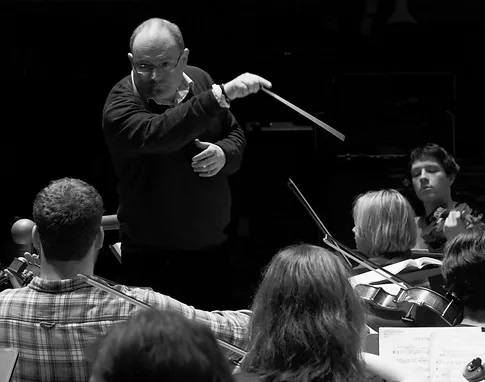THERE cannot be many full-time students of mathematics and philosophy in this country who are capable of the solo role in any violin concerto, let alone the Sibelius, which is one of the most demanding in the repertoire.
One such is a final-year undergraduate at the University of York, Anna Lezdkan. Her appearance was the centrepiece of an evening that included shorter works by Wagner and Richard Strauss after a modern Icelandic introduction.
Born in St Petersburg, Lezdkan has lived in this country since early childhood and had all her training here. She exhibited extreme calm under duress and despatched the testing cadenza early in the first movement with considerable panache, which compensated for some lapses in intonation in the upper regions.
Her eloquence in the slow movement was partially masked by orchestral accompaniment that tended to be heavy-handed, especially in the horns. But she managed its tricky double-stopping without difficulty.
The finale was a rumbustious affair, if undeniably exciting, tinged with gypsy colourings. But the rondo’s main theme emerged with clarity and Lezdkan dug into her octave swoops courageously. It was clear that she was well inside this score, despite the shortcomings noted above.
The evening had opened curiously with Clockworking, a work originally for string trio and tape but worked into an orchestral version in 2019 by María Huld Markan Sigfúsdóttir. Its seven minutes began mysteriously, slow and hushed, and gradually assumed rhythmic identity as clockwork shapes and snippets of melody appeared. Its climax was abruptly curtailed by a sudden diminuendo at the finish, as if the mechanism had developed a gremlin.
The Prelude and Liebestod from Wagner’s Tristan und Isolde got off to an uneasy start, but the prelude as a whole built impressively into a long crescendo that was propelled by the main melody rising in the cellos. This in turn inspired the violins into a sumptuously swelling blend in the Love-death (Liebestod) itself, eventually subsiding beautifully with Isolde’s ardour.
John Stringer allowed the orchestra to let its hair down paradoxically at the close with Richard Strauss’s Festliches Präludium (Festive Prelude). It was composed for huge orchestra in 1913 for the commissioning of the new organ at the Vienna Konzerthaus. It presented here as good as argument as any for this orchestra to play in the Central Hall rather than the confines of the Lyons.
At its heart, unsurprisingly, lies the organ and William Campbell cannot be blamed for pulling out all the stops at the start, over an extended pedal bass. Thereafter he achieved a welcome blend, as wind and brass engaged in vivid dialogue, until they united in a splendid chorale against much exciting activity in the strings. There was no need to agonise over detail: the wall of sound was breathtaking.
Review by Martin Dreyer






